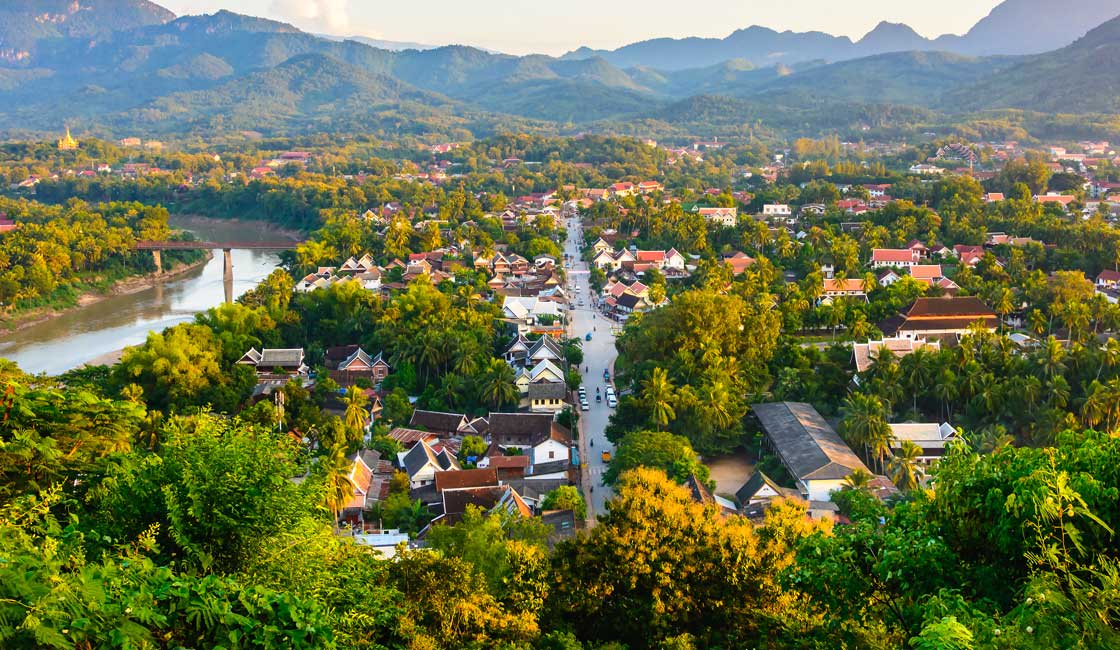
Luang Prabang is an ancient city in the northern part of Laos. A designated UNESCO World Heritage Site – with its unique mixture of serene temples, French colonial architecture, and rich history – Luang Prabang is definitely worth taking the time to visit. We’ve put together a list of our top 10 activities in Luang Prabang and the surrounding area, so you can start getting that trip planned!
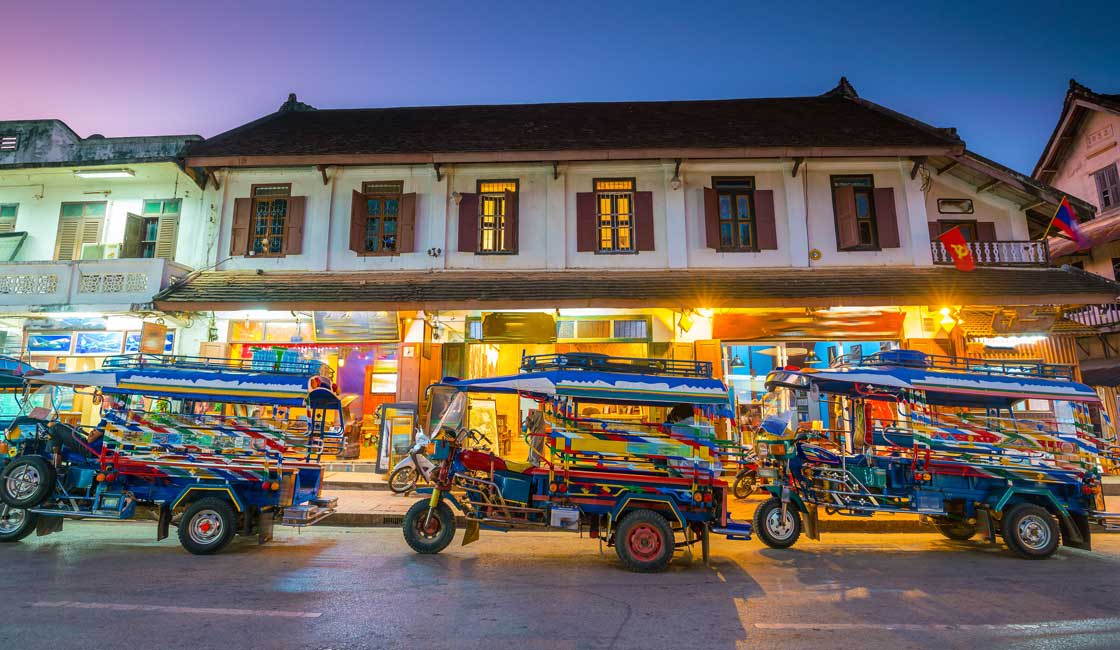
Charming colonial architecture
The old town or ‘old quarter’ of Luang Prabang is the section located on the peninsula of the Mekong and Nam Khan rivers, the original town that the modern-day city was built around. An important part of visiting any place is to simply wander around without a plan or agenda, soak in the atmosphere, and feel of the city. Luang Prabang is protected from the smoky traffic and bustle of many other south-east Asian cities by its UNESCO World Heritage Site status. This creates a unique sense of tranquility as you explore the town.
Whether you want to take a guided tour or simply wander around the old town yourself, exploring this section of the city is a must. You can admire the architecture, explore the bustling night market, visit the many restaurants, street food vendors, and eateries nearby on Buffet Street afterward. This area of the town is fairly small so all the attractions should be within walking distance, but if you fancy reclining there are plenty of tuk-tuks around!
Top Tips: A fantastic activity to do is to sign up for a cooking class. This is a great way to try your hand at rustling up some of the vibrant and delicious local cuisines, whilst meeting new people and getting a feel for the city.
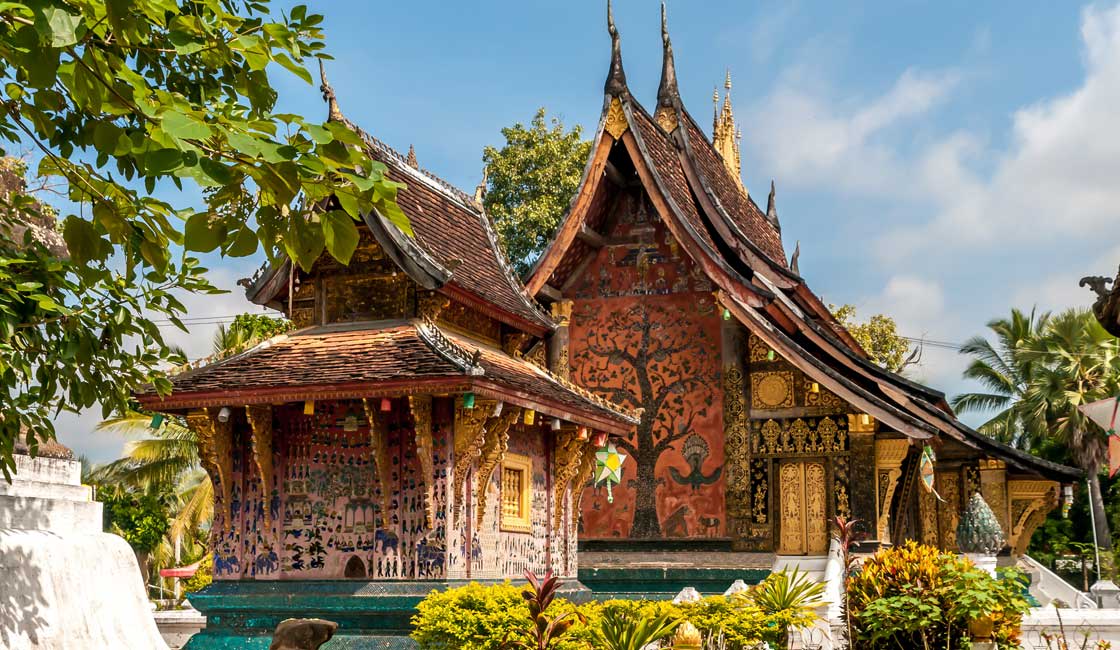
Temple’s decorations are captivating
Luang Prabang is a city that is known for its many beautiful temples. Once the capital of ancient Laos, many of the city’s old temples have remained largely unspoiled and unchanged for many years. The crowning jewel of these serene places of worship is undoubtedly the majestic temple of Wat Xieng Thong, or ‘Monastery of the Golden City’. This beautiful complex is one of the largest monasteries in Luang Prabang. With its ostentatious architecture, it is arguably the most spellbinding and historic temple in all of Laos.
Constructed in 1560 by the great King Setthathirath, Wat Xieng Thong showcases typical 16th-century Lao architecture with its unique undulating rooftops. The gilded walls are replete with ornate mosaics and carvings depicting folk legends and tales. You don’t have to be religious or spiritual to appreciate the calming majesty and beauty of this place. As you wander amidst the sweeping rooftops, which resemble the furled sails of a great ship, you can imagine being present as the old kings of Lan Xang (or as it translates: ‘the Kingdom of a Million Elephants Under the White Parasol’) was coronated here in this temple.
Wat Xieng Thong would have been the gateway into ancient Luang Prabang and the first stop for pilgrims visiting from all over south-east Asia. It is the most important symbol of Buddhism in Laos, and as such was spared destruction in the 1887 Black Flag invasion from China, when many other temples were ransacked and destroyed. It would be madness to visit Luang Prabang without including a trip to this incredible place.
Top Tips: The temple is located at the tip of the Luang Prabang peninsula. It can easily be reached on foot, but it would also be possible to travel there via tuk-tuk for a small cost. It is best to try to visit the temple early in the morning before the heat of the day and large crowds of tourists arrive.
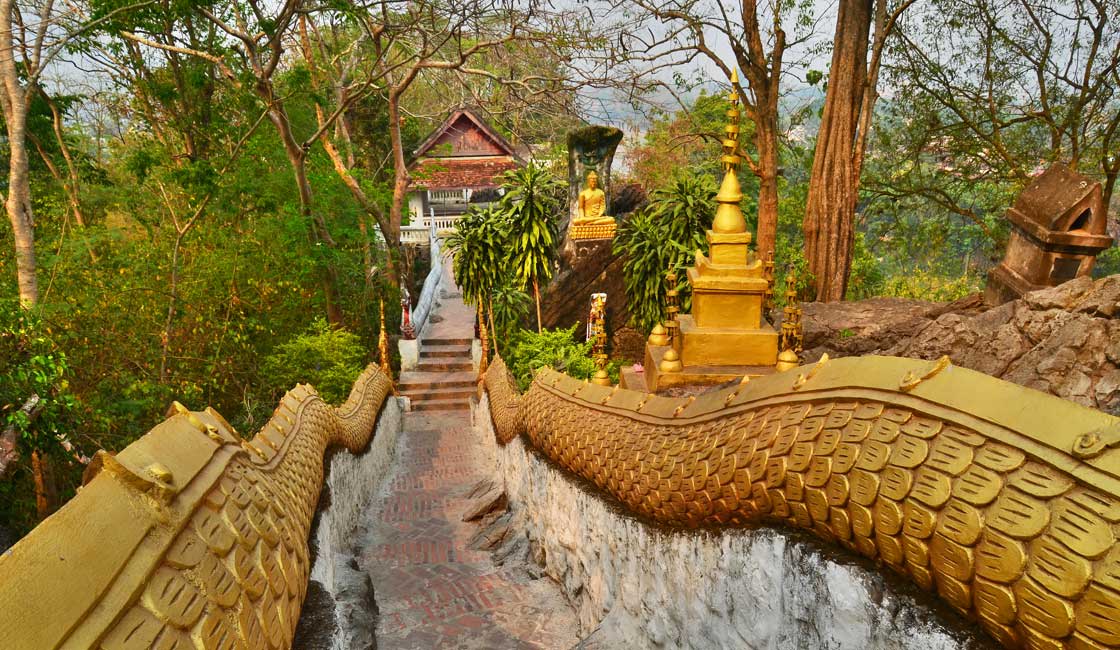
Walk along the dragon
Perhaps one of the first things to do upon arriving in Luang Prabang would be to climb the 300 steps to the top of Mount Phousi. Situated right in the heart of Luang Prabang, standing at a height of 100m, a climb to the summit of this hill offers an incredible 360-degree panoramic view of the entire city and surrounding landscape.
There are many things to see on the way up to the top, including a reclining Buddha statue, a hidden cave temple, and even a multi-headed serpent. When you reach the top, you can view the beautiful shrine of Wat Chomsi, a stunning golden Buddhist monument dating back to the 19th century.
The best time to make the climb is in the late afternoon when the heat of the day is waning. You can arrive at the summit just in time to watch the sunset over the Mekong River and the surrounding mountainous countryside, in what is widely considered one of the best vistas in the whole of south-east Asia. Or if you are feeling sprightly and want to avoid the crowds, you can get up early to climb the hill when it opens at 5:30 am, to watch the sunrise (be sure to bring a torch if you decide to do this, however, as it will be dark when you make the climb!).
Top Tips: The climb is quite gentle with plenty of rest stops, so it should be fine for most people to make the journey. Sadly, there is no disabled access so those with mobility issues may have to miss out. Bring plenty of water with you for the journey, as well as a mosquito repellent.
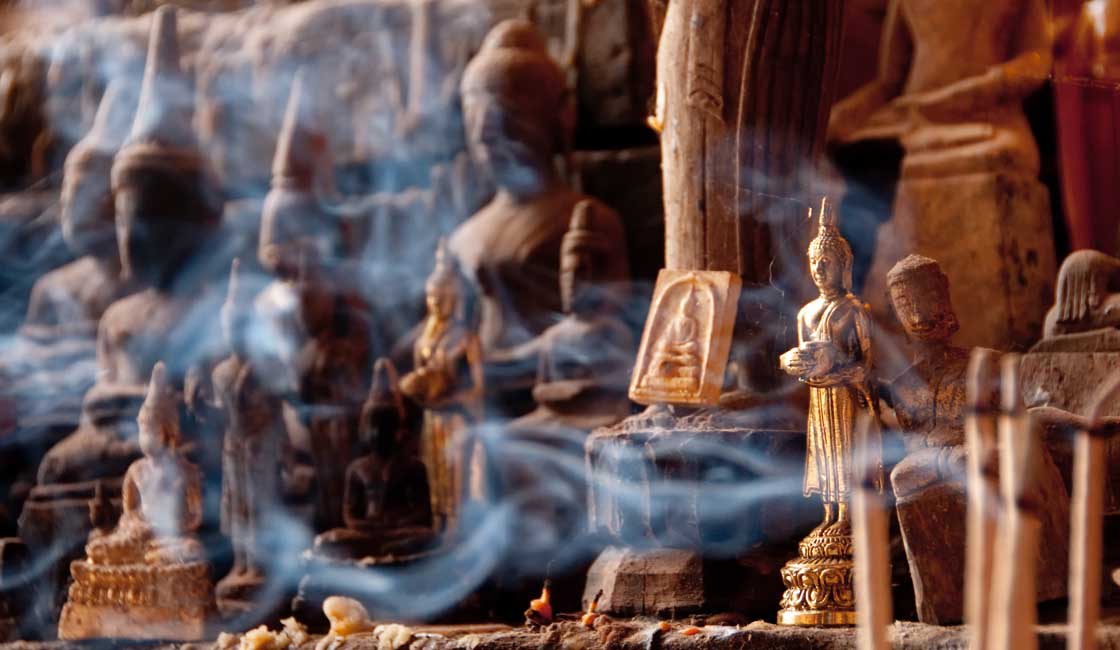
Buddha statues and incense sending the prayers out
If you fancy a trip out of the city to see a place brimming with natural aesthetic beauty alongside human tradition and spirituality then a trip to the Pak Ou Caves is definitely worthwhile. Located 25km north of the city at the junction of the Mekong and Nam Ou rivers, the caves are set in an impressive sheer cliff of limestone.
These caves, like many places in Luang Prabang, are of high spiritual and religious importance, both being shrines to the spirit of the river and to Buddha. The two caves are filled with thousands of statues and effigies of Buddha, placed there by local people over hundreds of years. These are visible to the naked eye in the lower cave of Tham Ting, as natural light filters into the cave, with the beautiful backdrop of the river. However, the slightly more tricky-to-reach upper cave of Tham Theung requires a five-minute climb up some steps, and you must remember to bring a torch with you as this deeper cave is very dark inside.
The best way to get to these stunning caves is by boat, along the Mekong from Luang Prabang. The caves lie close to the village of Ban Xang Hai which a lot of people will deem very worthy of a visit, as it is famous for its production of wine and whiskey. A lot of trips to the caves will incorporate a trip to the village as well, so a bit of sampling may be in order!
Top Tips: Remember to bring a torch! You won’t get far into the upper cave without one, and seeing the shadows of the myriad Buddha statuettes projected onto the cave walls via torchlight is truly magical.
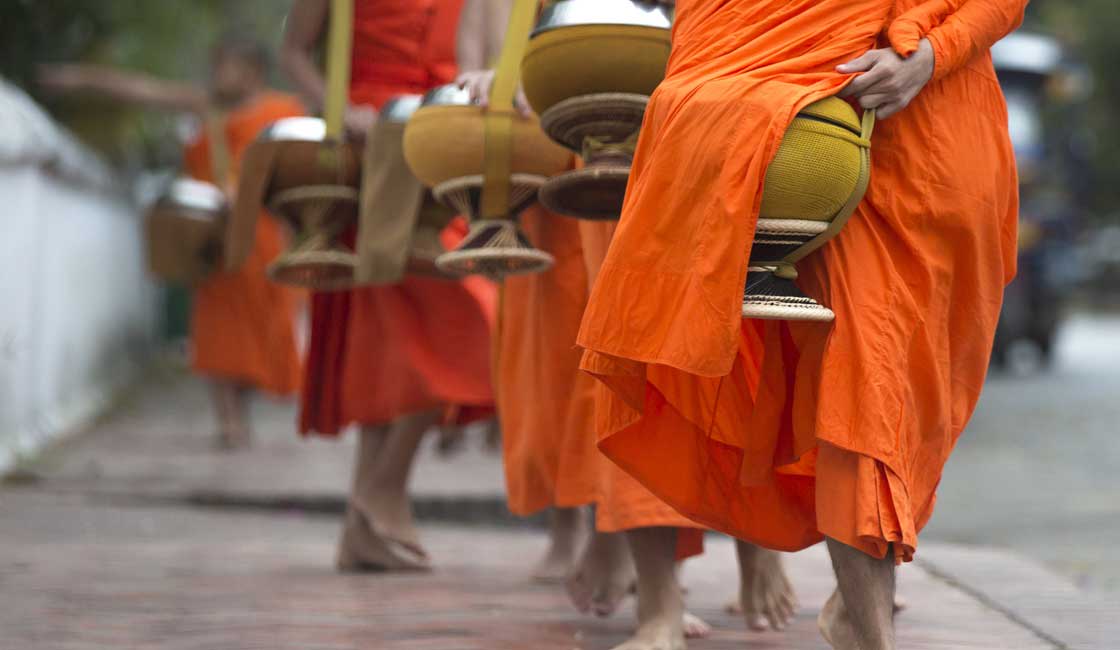
You can observe or participate in the ceremony
A large number of temples and monasteries in Luang Prabang obviously also means a large number of monks, and one of the most famous events the city has to offer is the daily alms giving ceremony or ‘Tak Bat’. Early every morning, a solemn procession of saffron-robed monks pours out of Luang Prabang’s 35 temples, and winds its way through the town, collecting offerings of sticky rice from devout locals to keep them sustained throughout the day.
This ritual giving of rice is not seen as an act of charity towards the monasteries, but more as part of the peoples’ religious and sacred duty. As such, it should be treated with the same respect afforded to any religious or spiritual ceremony that you attend.
Whilst nowadays it is common and accepted for tourists to attend and even take part in the ritual with their own offerings of rice, it is very important to recognize that this is an extremely sacred and important tradition for the local people. Care should be taken to show respect by not disrupting the ceremony in any way, and not being intrusive with photography or distraction towards the monks.
Top Tips: Learn how to respectfully attend the alms giving ceremony with our guide to Tak Bat.
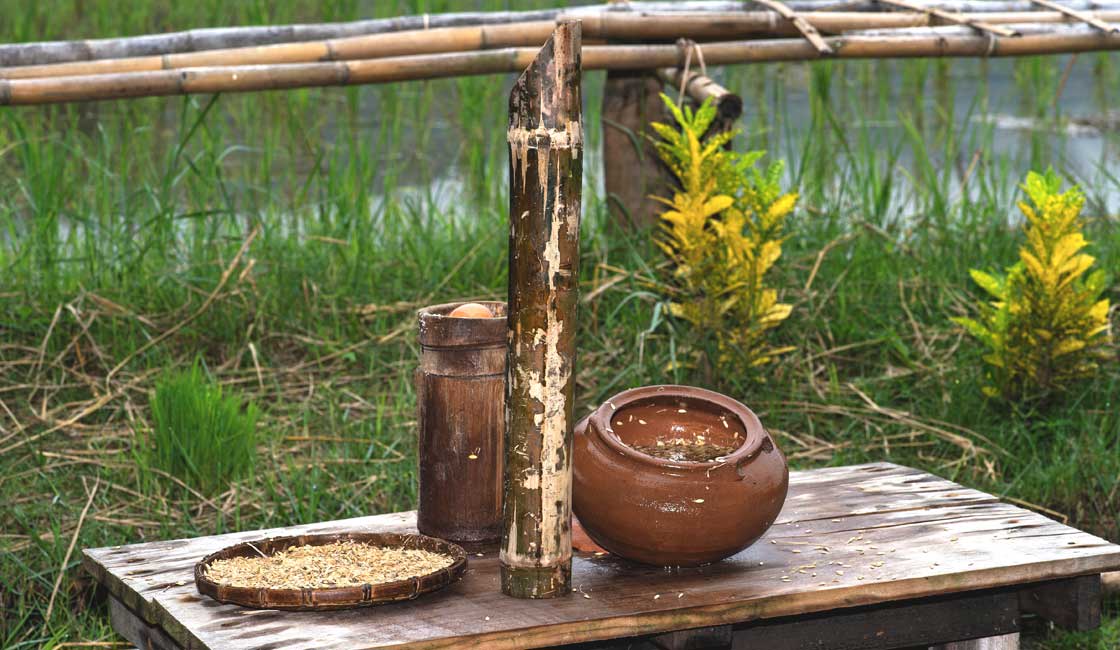
How to tell the quality of rice
If you want a slightly different experience outside of the normal touristy agenda, the Living Land Farm could be just the thing. You can learn about the agricultural history of the region in a hands-on experience, find out what it is like to grow up as a Lao villager, and even try your hand at rice farming!
Located 5km outside of Luang Prabang city, this eco-friendly farm offers accommodation with farm families in a converted rice barn, a restaurant serving authentic traditional Lao cuisine, and the ‘rice experience’ – a day of learning about the process, cultivation, and harvesting of rice. You can even have a go at manning a buffalo plow!
The profits of this organization go towards initiatives helping impoverished local children and families with education, and it was set up by a collective of local people – so it is really worth checking out.
Top Tips: The Living Land Farm is located on the road to Kuang Si falls, mentioned later in the article, so you could tie both trips together.
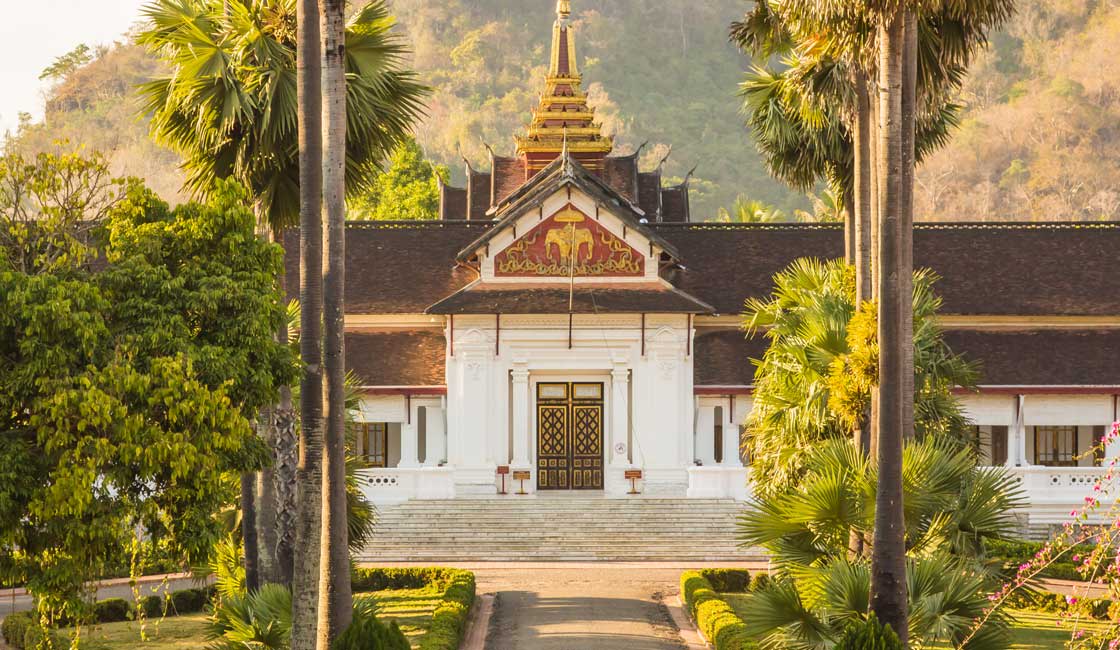
Royal Palace Museum
If you fancy understanding a little bit more about the rich history and culture of Laos, then the National Museum located in the Old Royal Palace is an absolute must.
The Palace was built in 1904 for King Sisavang Vong in the French colonial era. As such features a unique mixture of French Beaux-Arts styles and traditional Lao motif architecture. It was opened to the public as a museum in 1995. It provides a snapshot and insight into the lives of the Lao royal family in the early 20th century, including many paintings, murals, and even the original royal classic car collection.
Many unique and historically important artifacts are housed in the museum today, including the famous Phra Bang Buddha statue that gives Luang Prabang its name, each object with its own unique and fascinating story to tell.
Top Tips: As with many of the more popular places in Luang Prabang, the best time to visit the Royal Palace is early in the morning. This way you can avoid the throngs of tourists and also the early morning light is a lot better for taking pictures!
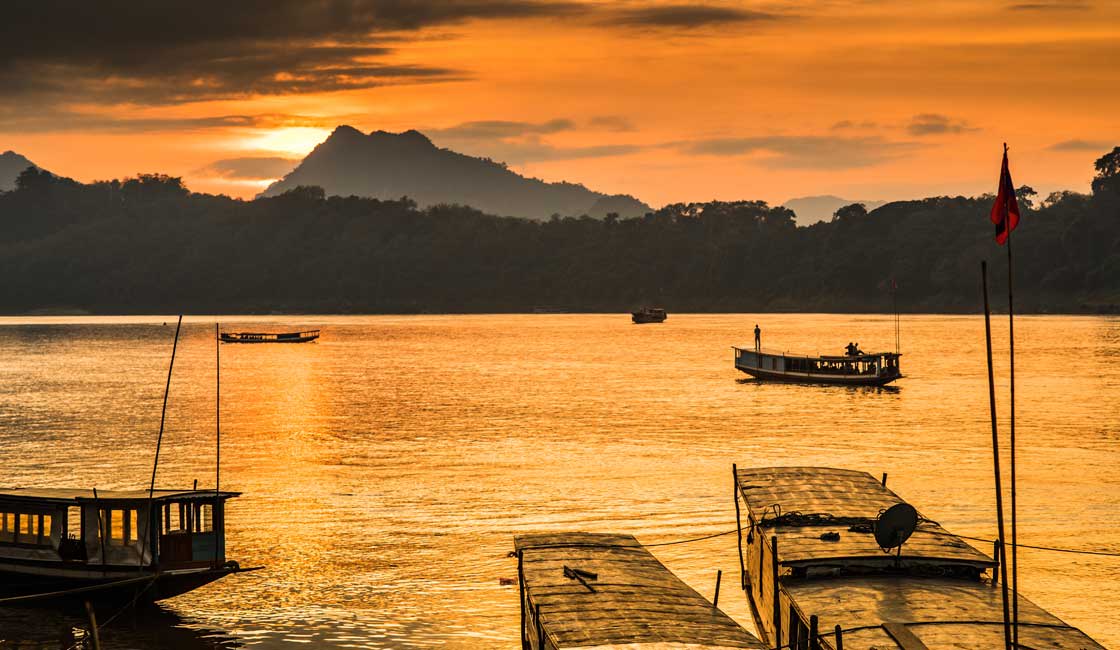
The ever-beautiful Mekong
The two rivers that straddle Luang Prabang are so important to the history of the city, and while you are there you should take the opportunity to explore the waterways. You can get a boat trip from the town across the Mekong to the opposite bank. There are many temples and small caves to explore on the other side of the river, including Wat Chompet temple which lies on a hill and offers great views back across the city.
The rivers are so important to the history and livelihood of this city, so even the trip across itself is worth doing to get a snapshot into the lives of the local fisherman and townspeople.
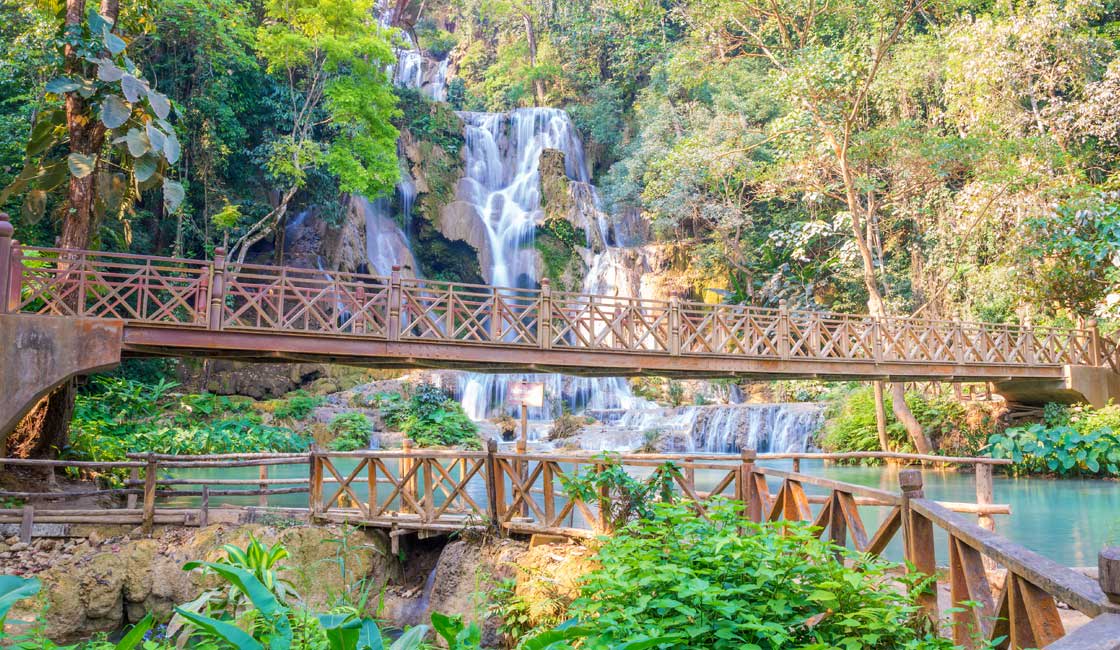
Plan a full day visit to the falls area
This one requires another trip out of the city, but it is absolutely worth the journey. Lying 29km south of Luang Prabang, the Kuang Si waterfalls are an absolute must for anyone visiting the area as it is widely considered one of the best natural attractions in the whole of Laos.
Nestled away in the jungle, like something straight out of a fairytale, the brilliant azure waters of Kuang Si cascade down a series of curious limestone shelves that seem as if they were built for swimming in. In fact, local folklore states that the falls were created by an old man who dug into the earth and summoned the water, and then a golden deer made its home there. This legend gives the falls their name – ‘Kaung’ means deer and ‘Si’ means to dig.
To get to the falls, you can journey via tuk-tuk from Luang Prabang, which will take you through beautiful mountainous Lao countryside and some small, picturesque villages.
Upon arriving at the falls, your first journey through the Tat Kuang Si Bear Rescue Centre. This is a small sanctuary containing rescued Asiatic black bears or ‘moon bears’. Across south-east Asia, these beautiful creatures are kept in horrible conditions as their bile is harvested and popularly used in Chinese medicine and various health products (despite having no proven medicinal value of course…), so sanctuaries like this one are extremely important for raising awareness.
As you make your way through the jungle to the falls, the beauty and serenity of the place take your breath away. Whether you’re keen to swim in the crystalline pools or simply to hike to the top of the falls to appreciate the stunning vista of the surrounding countryside, there is a reason that almost every traveler you meet in Laos will mention this stunning natural spectacle.
Top Tips: Bring proper shoes rather than sandals as the falls can be wet and slippery. Bring a dry change of clothes and sunscreen as there is not much shade if you decide to swim. You may want to bring some food, as although there is a restaurant nearby, the falls provide the perfect aesthetic for a quiet picnic.
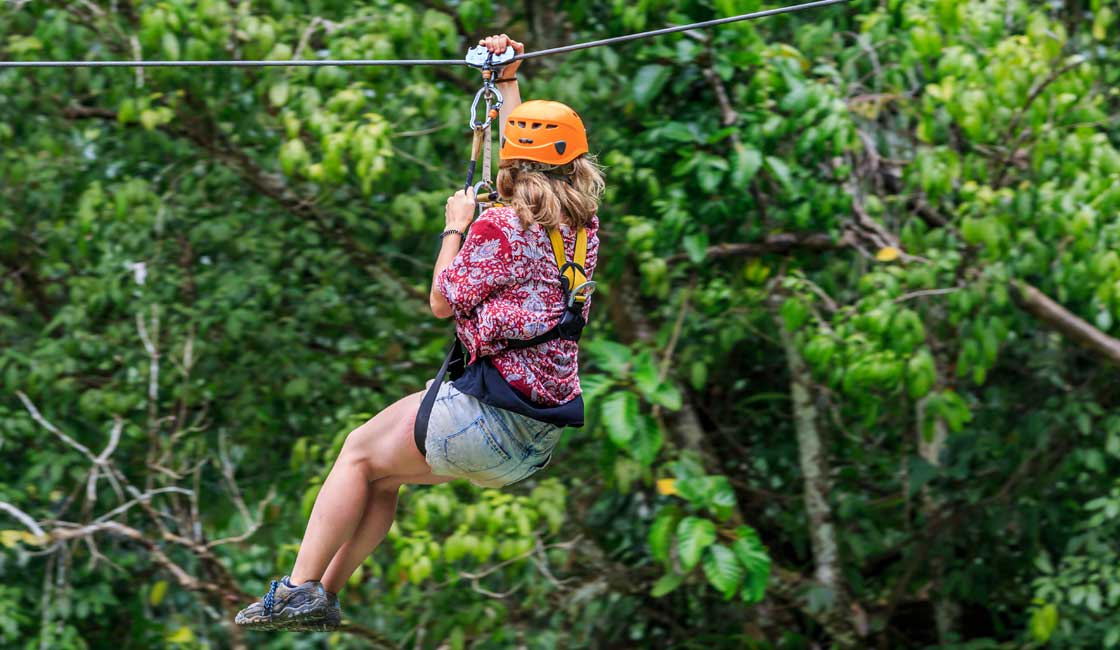
Fun in the trees
If you want to do something completely different from the rest of the recommendations on this list, then it might be worth checking out Green Jungle Park. If you fancy trying some adventurous activities such as zip-lining, treetop monkey bridges, and tricky rope courses, set in the stunning Lao jungle, then this activity is definitely for you.
Located around 45 minutes journey from Luang Prabang, you can get a boat ride from just behind the Royal Palace and enjoy a picturesque journey downriver, before being picked up at a jetty and taken via truck down bumpy dirt roads to the park. Even if you don’t fancy trying your hand at the strenuous activities mentioned above, the park contains a cafe, a beautiful flower garden, an organic food products market, natural swimming pools, and even an elephant viewing area.
Top Tips: Be sure to bring suitable, robust clothing and sensible shoes if you’re going to try your hand at being a jungle adventurer!
Visiting Luang Prabang is an essential part of any trip to Laos. The relaxed, thoughtful atmosphere created by the serene temples and lack of smoky traffic make this ancient city a truly unique experience. If you want to absorb the rich history and culture, explore the breathtaking surrounding landscape, or simply experience something completely unique in southeast Asia – why not check out one of our Upper Mekong river cruises and create some memories that will last a lifetime.
While Rainforest Cruises aim to provide accurate and up-to-date information, we make no representations as to the accuracy or completeness of any information herein or found by following any link on this site. Rainforest Cruises cannot and will not accept responsibility for any omissions or inaccuracies, or for any consequences arising therefrom, including any losses, injuries, or damages resulting from the display or use of this information.




